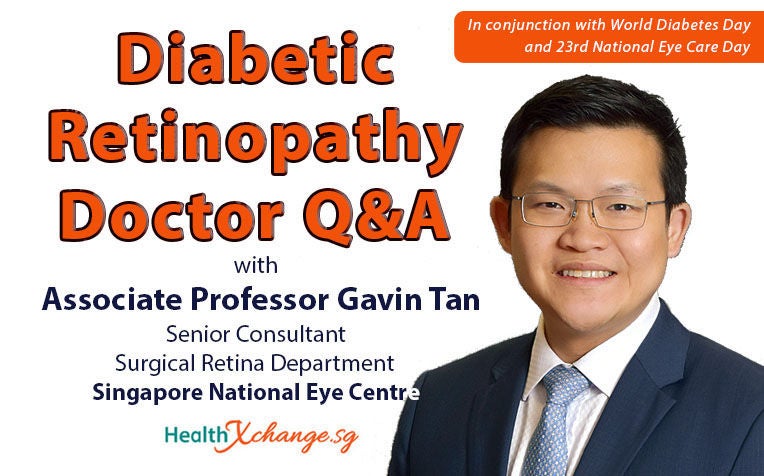
Ask Assoc Prof Gavin Tan any question about Diabetic Retinopathy such as causes, symptoms and treatment.
Diabetes affects approximately 8% of Singaporeans in 2020. This incidence continues to increase with time due to lifestyle and diet.
People with diabetes (also known as diabetics) are at risk of developing Diabetic Retinopathy, the most common microvascular complication of diabetes.
It is an eye condition that causes damage to the retina, the light-sensing nerve layer at the back of the eye, resulting in vision loss for people with long-standing diabetes.
Diabetic Retinopathy often has no early warning signs and the sight may not be affected until the condition is severe.
As the disease progresses, symptoms may include:
Loss of central vision when reading or driving
Loss of the ability to see colour and
Mild blurring vision
In most cases, laser surgery can prevent significant vision loss associated with the condition. However, many patients with diabetic eye disease may require Medicines to be injected into the eye to control swelling or new vessel growth. Other surgical procedures such as vitrectomy may be required in advanced cases where there is bleeding in the eye, scar tissue formation and retinal detachment. Surgery is usually the last resort to save vision.
It is thus important for diabetics to go for yearly eye checks even if they experience none of the above symptoms. Your doctor can make the diagnosis of Diabetic Retinopathy by examining your eyes and taking a photo of the back of your eye.
In this Q&A forum, Associate Professor Gavin Tan, Senior Consultant with the Surgical Retina Department at Singapore National Eye Centre (SNEC), a member of the SingHealth group, will answer your questions on the causes, symptoms and treatment of Diabetic Retinopathy.
This 'Ask the Specialist' forum has closed. Thank you for your interest and participation.
About Associate Professor Gavin Tan
Associate Professor Gavin Tan is a Senior Consultant with the Surgical Retina Department at the Singapore National Eye Centre (SNEC). He is also the Head of the Ocular Diagnostic Department at SNEC and the Academic Vice-Chair of Strategy, Innovation & Organisation Transformation with SingHealth Duke-NUS Ophthalmology & Visual Sciences Academic Clinical Programme (EYE ACP). He began his career in Ophthalmology at SNEC and completed a two-year fellowship in vitreo-retinal diseases and surgery at the centre in 2014. Under the SingHealth scholarship, Associate Professor Tan pursued further overseas training in the field of vitreo-retinal at both the Byer Eye Institute at Stanford University, USA and Jules Stein Eye Institute at the University of California, Los Angeles (UCLA).
Associate Professor Tan is involved in the development and implementation of a national diabetic retinopathy telemedicine screening program in Singapore and is studying the use of novel approaches including optical coherence tomography, automated detection of retinopathy and personalized screening intervals to improve cost effectiveness and efficacy of diabetic retinopathy screening. Besides imaging, he has research studies aimed at identifying novel biomarkers and improving treatment strategies in diabetic retinopathy. He also works in collaboration with the Endocrine and Nephrology groups at examining ophthalmic complications in diabetes and nephropathy trials.
Being passionate about eye research, Associate Professor Tan was awarded multiple grants to study Diabetic Retinopathy. His goal is to eliminate diabetic visual impairment and blindness by developing and evaluating new methods in screening, diagnosis and treatment of diabetic retinopathy with the goal of transforming clinical care and improving patient outcomes.
Ref: J22














 Get it on Google Play
Get it on Google Play